The Theomins in Dunedin
The Theomin Family led active lives of community commitment, with involvement in many fields of interest. They were well travelled and cultured.
read more about the members of the Theomin family
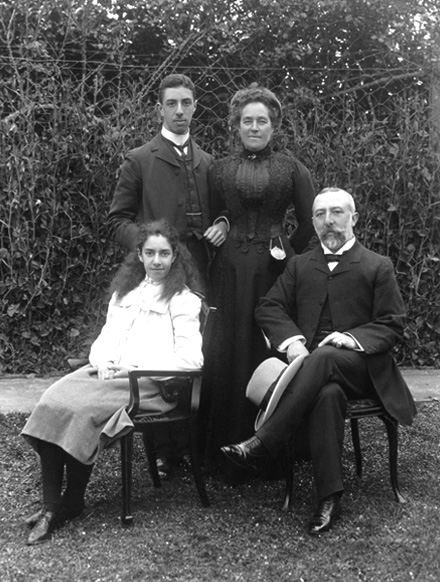 Front: Dorothy Theomin, David Theomin,
Front: Dorothy Theomin, David Theomin,
Back: Edward Theomin, Marie Theomin.
Taken at the time of the building of Olveston
by Muir and Moodie, c. 1902.
The Theomin Family Tree
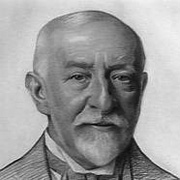
David Theomin
1852-1933
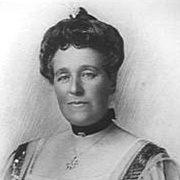
Marie Theomin
(née Michaelis)
1855-1926
married
1879
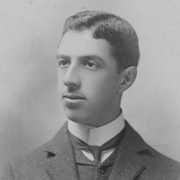
Edward Theomin
1885-1928

Dorothy Theomin
1888-1966
click on a Theomin family member
to read more about their lives below
David Edward Theomin
(1852-1933)
David Theomin (born David Ezekiel Benjamin) was born in Bristol on 25 April, 1852. He was the third son of his father, Joseph Benjamin-Theomin, a Jewish Leader who had come from Central Europe sometime after the Napoleonic Wars to settle in England in the vicinity of Sheerness. Once in England, he discontinued using the name of Theomin. His first wife, Rebecca, bore him two sons, Abraham and Lewis and a daughter, Rebecca. After his first wife’s death, he moved to Bristol and married again in 1851. His second wife was Esther Braham, whose family had come to Devon from Bavaria before the middle of the eighteenth century. Esther’s first child was born in 1852 and was given the name David Ezekiel Benjamin. This name he retained officially until 1885. In 1854, Esther gave birth to a second child, who was named Helen. She was Joseph Benjamin’s second daughter and David Benjamin’s full sister.
David Benjamin was educated at Wharton’s School in Bristol, then between 1862 and 1864, at the Bristol Grammar School. He was apprenticed in the mercantile world of Bristol and continued to work in his birthplace until 1874 when he immigrated to Melbourne. His older half-brother, Abraham Benjamin was in business there. As a younger son in a family which was far from being well-to-do, David Benjamin found it necessary to strike out and make his own way in the world. In this, he was typical of a great many young men in the Britain of his time.
Four years after arriving in Melbourne, he took a trip to Auckland. From there, he set out to sail to Lyttelton on the steamship ‘Taranaki’ and he was shipwrecked in the Bay of Plenty. It was a wreck that claimed no lives. Having completed his visit to the South Island, David Benjamin returned to Melbourne where in January 1879, he married Marie Michaelis. The couple sailed for Dunedin and by 1881 they were living in Royal Terrace in a house, the land for which formed part of Olveston’s present site.
Quickly, the general importing firm of David Benjamin and Company was established and by the middle of the 1880’s the Dresden Piano Company was founded and soon extended to open branches in all the main towns of New Zealand. At the time of the First World War, the name of the firm was changed to the Bristol Piano Company. It was also in the eighties that David Benjamin and his father-in-law along with Messrs Hallenstein and Farquhar, helped develop the tannery at Sawyers Bay, later to become known as Glendermid Ltd.
In February 1885, close upon the birth of his first child, David Ezekiel Benjamin changed his name by Deed Poll. He resumed the surname his father had discarded after his migration to England and officially he came to be called David Edward Theomin.
With his businesses flourishing, Mr Theomin was able to develop his interest in the arts.
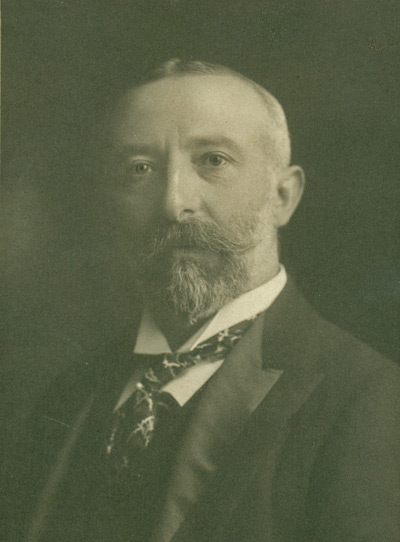 David Theomin
David Theomin
Portrait taken by The Falk Studios, Melbourne, London.
He had a long and active association with the Dunedin Public Art Gallery and with the Royal Dunedin Male Choir. He was also an active private collector, a fact to which the contents of Olveston amply bears witness.
A public spirited man, David Theomin gave many years of service to the Patients’ and Prisoners’ Aid Society, the Shipwreck Relief Society and the Otago Patriotic and General Welfare Association. For twenty-seven years he served as a commissioner of the Dunedin Sinking Fund, a body responsible for ridding the city of its debt burden.
He was a member of the Dunedin Chamber of Commerce and held the Presidency in 1901 and 1902. In 1900 he represented the Chamber of Commerce at the celebrations for the inauguration of the Federation of Australian States. He represented the same body at the Coronation of Edward V11 in 1902.
During much of his Dunedin life, he was President of the Hebrew Congregation. A man of small stature, he had, nevertheless, a commanding presence. In dress, he was immaculate. The commonest observation made of him referred to his unfailing kindness and consideration given to all who came his way.
David Theomin died at Olveston on 15 July, 1933 aged 81.
Marie Theomin (née Michaelis)
(1855-1926)
Born on 12 October, 1855, Marie Michaelis was the second child born to Moritz Michaelis and his wife, Rahel, [nee Gotthelf]. A daughter born earlier than Marie did not survive so she became the oldest child in a big family of eleven others younger than herself. Mr Michaelis was a prominent Melbourne businessman who later joined with his nephew, Isaac Hallenstein in a tannery business at Footscray. The Michaelis family home called Linden still survives in St Kilda as a community arts centre, and a fine photograph of the house in its hey-day is on display in the reception area at Olveston. It is of particular interest to visitors from Melbourne.
Marie Michaelis married David Benjamin at Linden on 31 January, 1879 and later in that year, the couple moved to Dunedin. Marie was not without family in the town for two of her six sisters, - the twins Helene and Florence were already there, married respectively to Jack Isaacs and Hyam Hart. Both men were partners in Hallenstein Bros. Company of Dunedin.
For more than twenty years, Marie and David lived in a house which was on part of the present Olveston site and there, she raised their two children. That house seems also to have been known as Olveston. The grand new house began to rise in 1904, the year when the couple, by then known as Mr and Mrs Theomin, celebrated their twenty-fifth wedding anniversary.
Throughout the last two decades of her life, Marie Theomin was fully occupied in a voluntary capacity with public and charitable works. She is particularly remembered for her involvement in the Plunket Society. Very soon after Olveston was completed, she was hostess at a small dinner party and the guests around the table were all influential in the formation of the Society which came into being about a month later on 14 May, 1907. She remained actively involved in the Plunket Society which became internationally famous for its work in support of mothers and young children. In Olveston, we sometimes set the main table to commemorate that dinner party which took place during the first year of life in the new house.
Mrs Theomin was a founding member of the Victoria League, active on its committee and a vice-president at the time of her death.
 Marie Theomin (née Michaelis)
Marie Theomin (née Michaelis)
and Edward as a small child.
The work of the League during the Great War of 1914-1918 made more demands on her time. From 1915 onwards, she also shared with her husband an involvement with the Otago Patriotic and General Welfare Association. It was the Victoria League, paying tribute to Mrs Theomin in August 1926, which caught something of the essence of her strong character:
“It was the privilege of members of the Victoria League to work side by side with Mrs Theomin in all those activities suddenly called into being during the war and we who saw her day by day with burning devotion, expending her powers for every patriotic purpose, felt the inspiration of her example and gladly followed her lead.”
Marie Theomin died on 24 July, 1926 aged 71.
Edward Moritz Theomin
(1885-1928)
Edward, the only son of David and Marie Theomin was born on 29 January, 1885. He was educated at Otago Boys’ High School which he attended in the years 1899-1901. After leaving school, he took up employment in his father’s business as a warehouseman. When the Great War commenced in 1914, he was working at the Sawyers Bay Tannery and his responsibilities there would have been officially viewed as being essential to the war effort. However, he enlisted for military service in January 1917 and underwent training at Trentham during that year, earning his sergeant’s stripes in September, attached to the Otago Regiment. He was posted overseas with the second draft of the 31st Reinforcements, sailing in the “Wallachia” in November 1917. By March 1918, he had been transferred to the Wellington Regiment and preceded to active service in France. For two months, he experienced field duty with No 1 New Zealand Infantry Battalion before being evacuated with bronchitis. He was back on active duty in Etaples late in May 1918 but his health problems persisted and he was discharged medically unfit in December. His disability was diagnosed as being nasal catarrh. Presumably because of his health, his final demobilisation date did not come through until February 1919.
At the end of the war, he met Ethel Grace Mocatta in London and the couple was married in May 1919. They returned to Dunedin and Edward resumed his duties as Manager of the Sawyers Bay Tannery.
In 1922, it became apparent that he was in the grip of a debilitating disease called Lethargic Encephalitis. For about a decade from 1917, this disease caused a world-wide epidemic which was thought to be of viral origin though it does not seem to have been medically proven. The syndromes demonstrated many of the characteristics of Parkinson’s Disease and its progression from earliest onset to death was slow but inevitable.
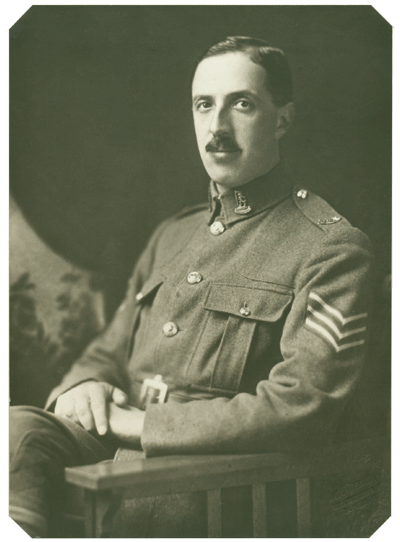 Edward Theomin
Edward Theomin
in military uniform, c.1917-18.
Edward Theomin died on 17 November, 1928 aged 44. Sadly for the Theomin family name there were no children from the marriage.
Ethel Grace Theomin
(1889-1982)
Ethel Grace Mocatta was born in London in 1889 to Charles Mocatta and his wife,
Sarah. The Mocattas were a distinguished Sephardic Jewish family of City brokers
and bullion dealers, whose ancestor was one of twelve Jewish brokers admitted from
the Lowlands into England by Oliver Cromwell in 1656.
[Sephardic Jews are those who trace their descent from Spanish and Portuguese origins.]
Ethel Mocatta received her early education in London and attended finishing school in Switzerland. Miss Mocatta showed her strongly independent nature early by insisting on being permitted to pursue a course in Chemistry at London University. Family approval appears to have been given with the proviso that she be accompanied by her maid. She was awarded a B.Sc. Degree and worked for a time as an analytical chemist. She met Edward Theomin through her brother Frederick Mocatta who had known him in the later stages of the War.
The couple was married on 20 May, 1919 in the Spanish and Portuguese Synagogue in Lauderdale Road, London and they travelled out to Dunedin ultimately to set up their home at No 8 Royal Terrace. After Edward’s death, Ethel Theomin continued to live there for many years, during which she regularly attended Friday night dinner at Olveston. She had many interests in common with those of Dorothy Theomin including a lifelong love of both fine and applied arts and also music and literature. She was a skilled embroideress and you will find some fine examples of her work in Olveston. In younger years, like Dorothy Theomin, she was a keen mountaineer and a member of the British Alpine Club. She also climbed in the Southern Alps. At No 8 Royal Terrace, she maintained a garden often commented upon by people who knew her.
Ethel Grace Theomin outlived her husband by fifty-four years and continued to reside in Dunedin until her death on 23 June, 1982 at the age of 93.
Dorothy Michaelis Theomin
(1888-1966)
The only daughter of David and Marie Theomin was born on Christmas Eve, 1888. Her early education was at Miss Miller’s School, Braemar. Between 1902 and 1905, she studied at Roedean on the Sussex Coast, a new school founded in 1885 by Dorothy, Penelope and Millicent Lawrence. Roedean broke away from the stifling restraints of later Victorian education for women and encouraged its pupils to develop inquiring minds and self-reliance, both physical and mental. Dorothy Theomin returned to Dunedin at the time when Olveston was being completed. The house quickly became a centre of social activity generated by business connections, involvement with the arts and with the Synagogue as well as numerous philanthropic enterprises. When Mrs Theomin found herself taken up with Plunket Society affairs and those of other organisations, Dorothy fell naturally enough into the role of running the busy house.
This was not allowed to stand in the way of her developing her own life. She was keenly interested in outdoor pursuits. As a member of the New Zealand Alpine Club, she climbed and tramped in the Southern Alps over many years. Olveston has on display a record of her climbs and transits in the Alps. When her climbing days were over, she continued to spend time at Franz Josef and its environs where, during much of the year, the air was friendlier to her asthmatic condition than that of the East Coast. Photography was one of her many talents and she was recognised as a skilled mountain photographer. Much of her photographic work is lodged in the Hocken Library.
She enjoyed playing golf and she rode, often in company with her sister-in-law. She was a member of the Otago Hunt Club.
Dorothy Theomin followed her mother’s interest in the Plunket Society not merely as a public duty but because she had a genuine fondness for children. It was one of her specific wishes in offering Olveston to the citizens of Dunedin, that children should be encouraged to enjoy the Theomin family home.
During the war of 1939-1945, she was active in the Red Cross and there are still people about who remember with warmth her food parcels and her letters of encouragement, especially to prisoners of war. All her life, Dorothy Theomin continued the interest of her father in art and music. Like David Theomin, she had a good singing voice and she was a competent pianist and accompanist. She was a member of the Dunedin Public Art Gallery Council and was Vice-President from 1954 to 1957 and President from 1957 to 1959.
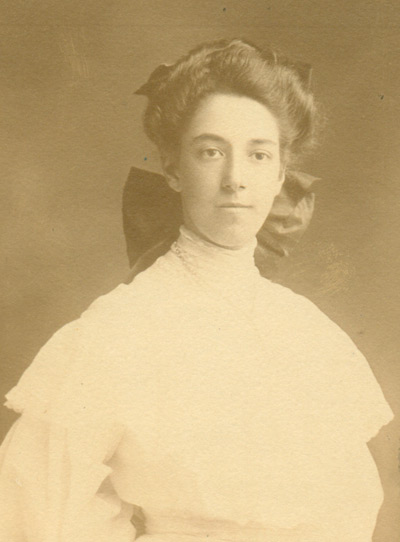 Dorothy Theomin
Dorothy Theomin
As a young woman. Portrait by Sarony, Melbourne, London.
She was an enthusiastic traveller and even after her family had died, she continued to make journeys to Australia, Britain and Europe. After her father died, Miss Theomin continued to live at Olveston for a further thirty-three years until shortly before her death.
When Dorothy Theomin died on 11 October, 1966, aged 78, her will revealed that she had left Olveston and its contents in the care of the City of Dunedin, subject to certain conditions being met. There was a period of uncertainty as to whether or not the City would accept the gift and it was largely due to the energies of a group of Miss Theomin’s friends that Olveston was finally accepted as a property fit to become an historic home open to the public. The property was to be administered by the Dunedin City Council and the Dunedin Public Art Gallery Society. In August 1967, those bodies signed a Deed of Agreement that led to the establishment of the Theomin Gallery Management Committee which now administers Olveston.
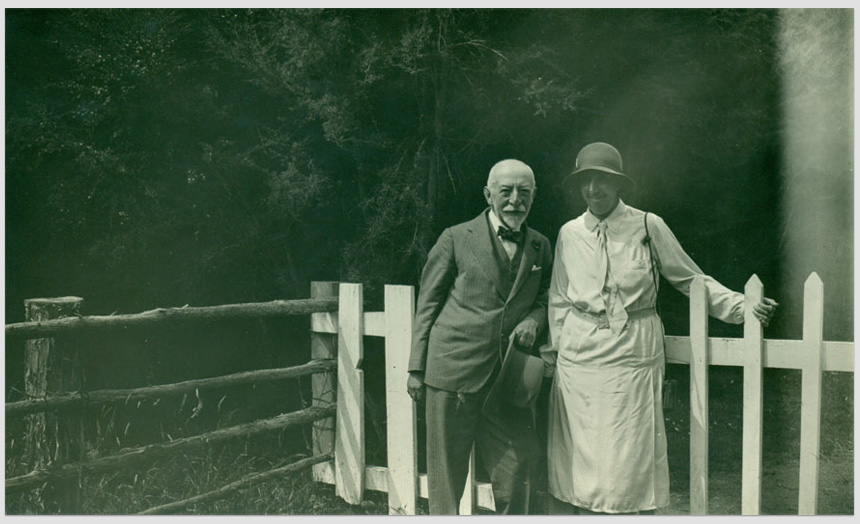 (1/22) David Theomin in his later years with daughter Dorothy Theomin.
(1/22) David Theomin in his later years with daughter Dorothy Theomin. (2/22) David Edward Theomin with his daughter Dorothy. They are seated at a table with an unidentified woman.
(2/22) David Edward Theomin with his daughter Dorothy. They are seated at a table with an unidentified woman.
This photo forms a black & white postcard, possibly from holiday overseas travel in 1927.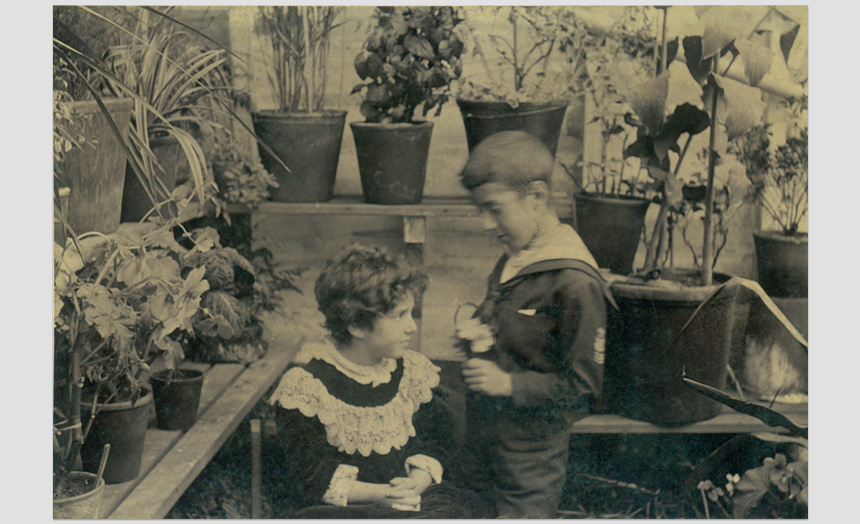 (3/22) Edward and Dorothy Theomin in a greenhouse.
(3/22) Edward and Dorothy Theomin in a greenhouse.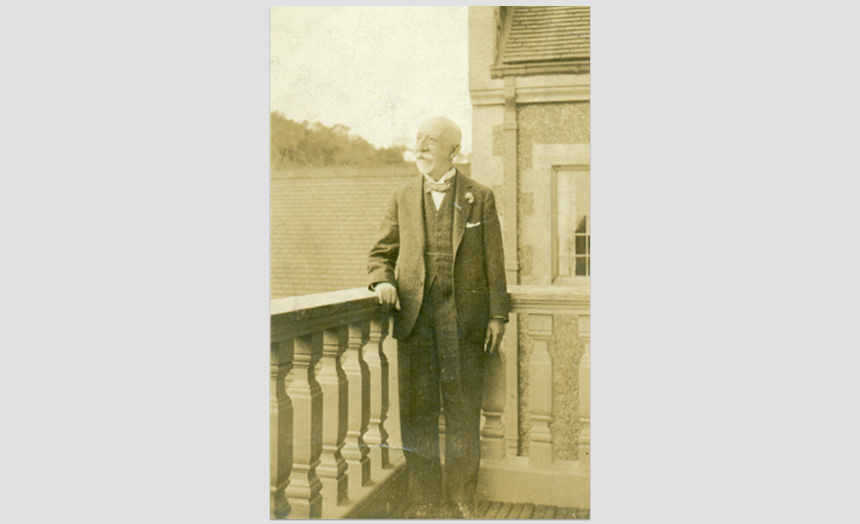 (4/22) David Theomin, late 70’s in age. At Olveston on the balcony off the sitting room. ‘S506’ Kodak print.
(4/22) David Theomin, late 70’s in age. At Olveston on the balcony off the sitting room. ‘S506’ Kodak print.
(Passed on by Margery Blackman from Mr John F Walker, custodian at Olveston 1967-1971).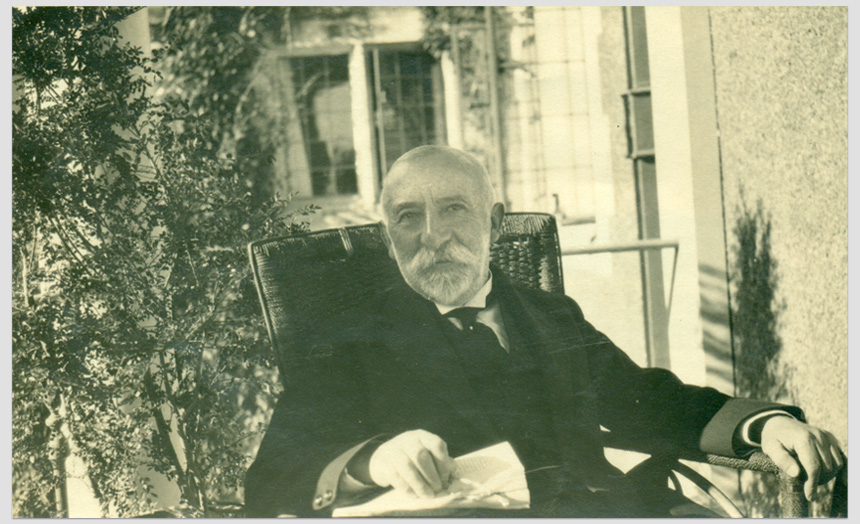 (5/22) David Theomin.
(5/22) David Theomin.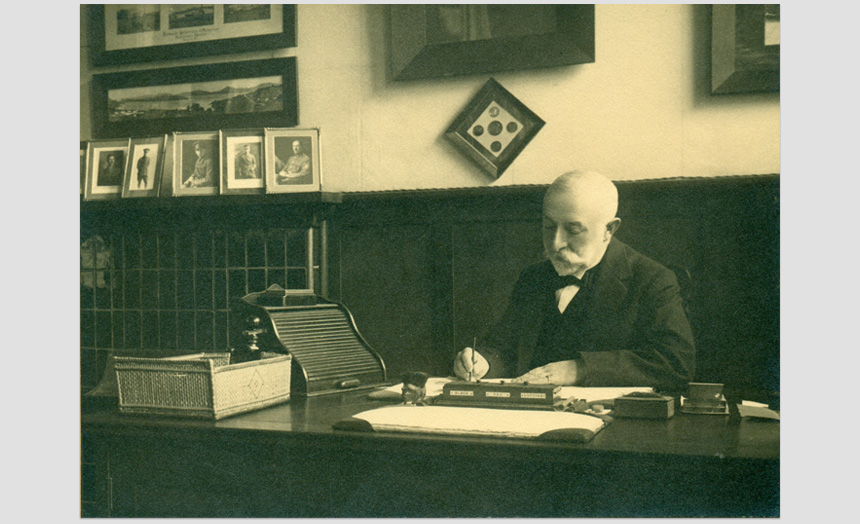 (6/22) David Theomin sitting at his desk.
(6/22) David Theomin sitting at his desk.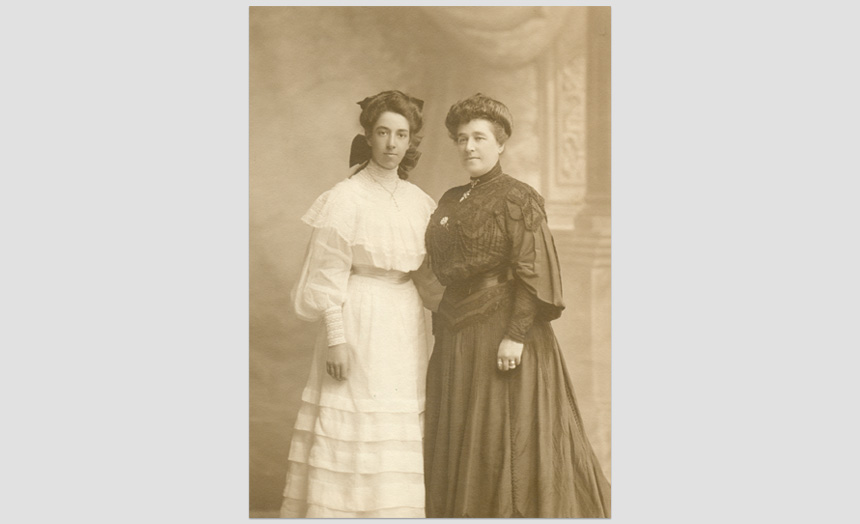 (7/22) Marie Theomin (née Michaelis) and her daughter Dorothy as a young woman.
(7/22) Marie Theomin (née Michaelis) and her daughter Dorothy as a young woman.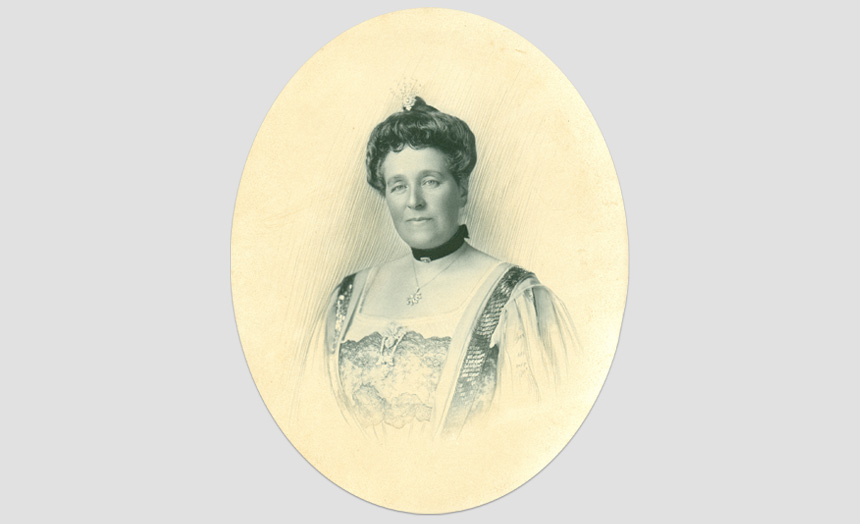 (8/22) Marie Theomin (née Michaelis). Chest portrait. Black white & pencil. Mounted. Removed from black oval frame.
(8/22) Marie Theomin (née Michaelis). Chest portrait. Black white & pencil. Mounted. Removed from black oval frame. (9/22) Edward Theomin as a baby.
(9/22) Edward Theomin as a baby.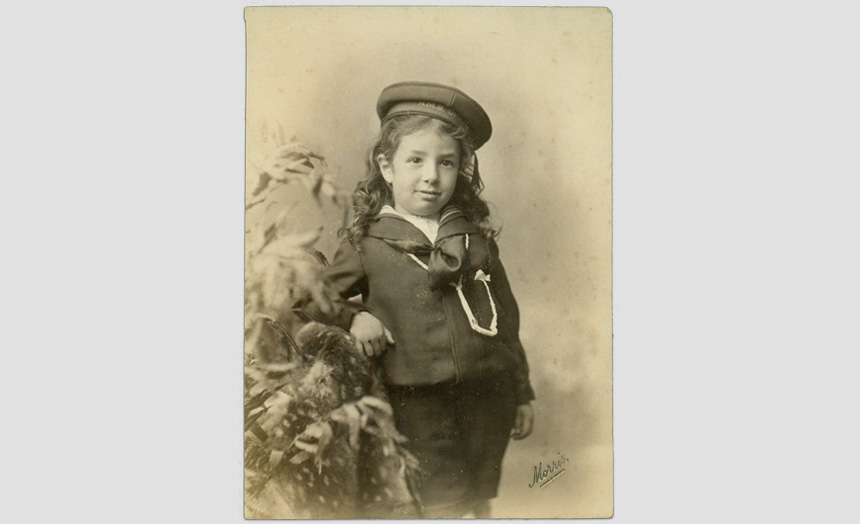 (10/22) Edward Theomin as a child.
(10/22) Edward Theomin as a child. (11/22) Edward Theomin. Portrait of a young man wearing a suit.
(11/22) Edward Theomin. Portrait of a young man wearing a suit.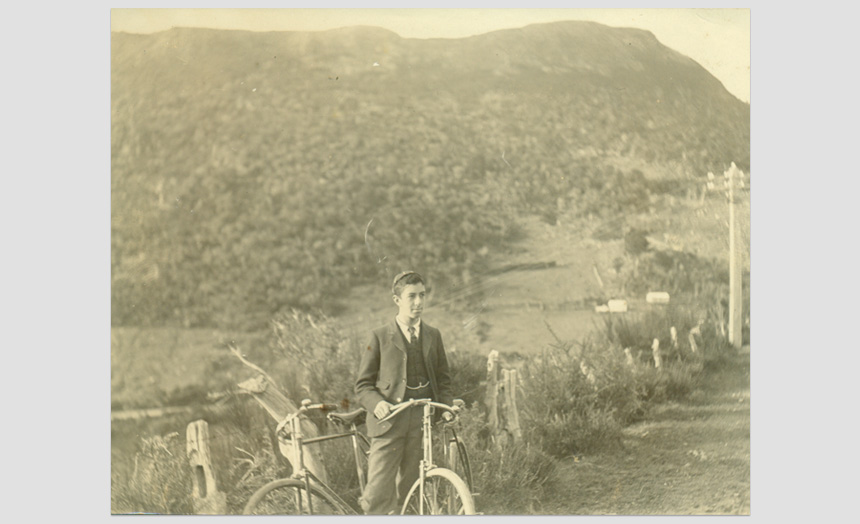 (12/22) Edward Theomin. As a youth, with bicycle.
(12/22) Edward Theomin. As a youth, with bicycle. (13/22) Edward Theomin with 2 other young men outside a (Dunedin) Railway station.
(13/22) Edward Theomin with 2 other young men outside a (Dunedin) Railway station.
One of a set of ten snapshots of a picnic outing, (early 1900’s).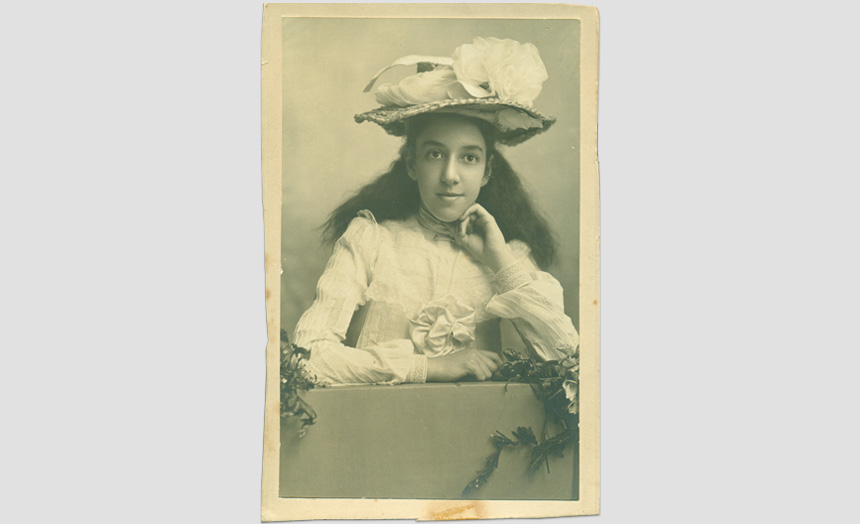 (14/22) Dorothy Theomin.
(14/22) Dorothy Theomin.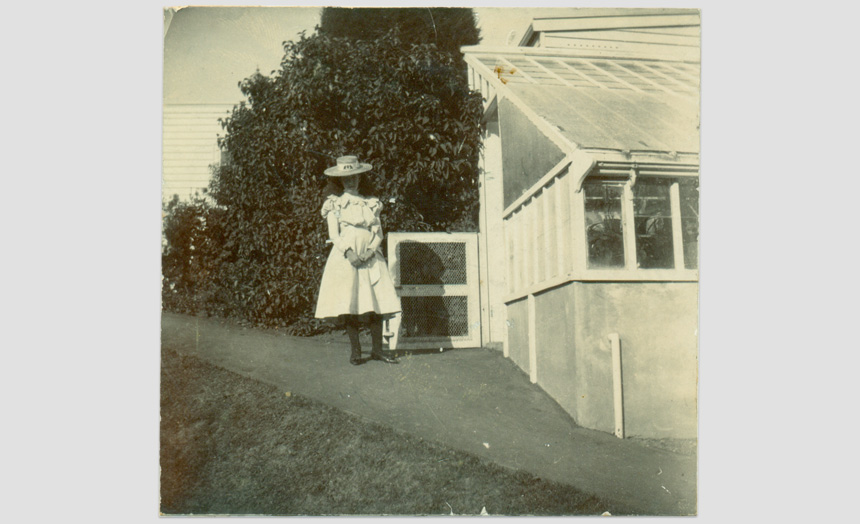 (15/22) Dorothy Theomin. As a child, taken outside the greenhouse at the first Olveston.
(15/22) Dorothy Theomin. As a child, taken outside the greenhouse at the first Olveston.
Inscribed on back ‘Please do not call me till 8 o’clock’.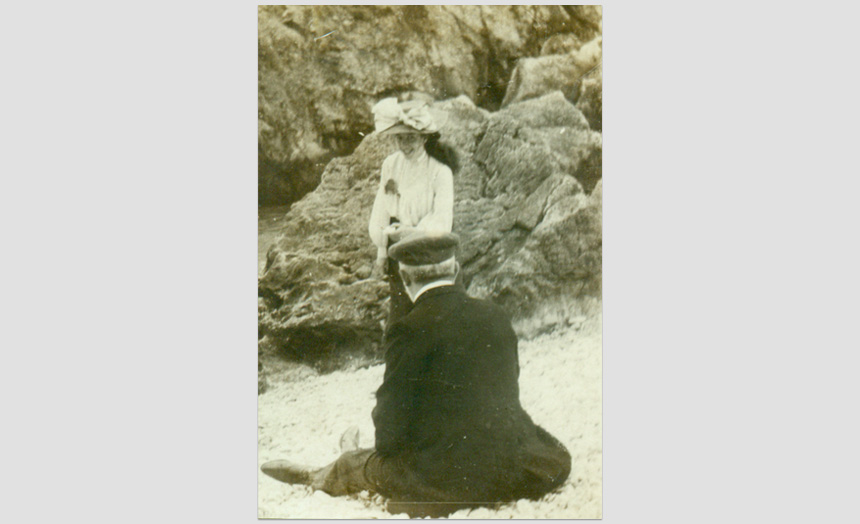 (16/22) Dorothy Theomin. As a young woman (smiling) with her father on a beach.
(16/22) Dorothy Theomin. As a young woman (smiling) with her father on a beach.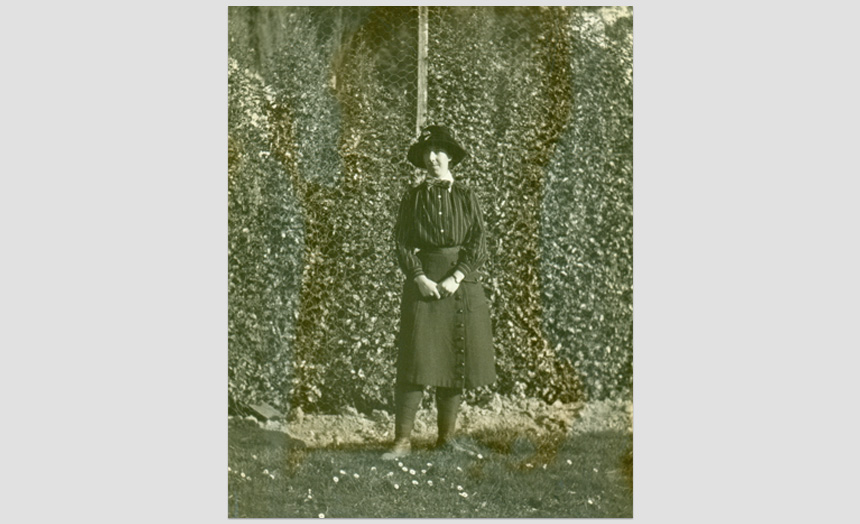 (17/22) Dorothy Theomin, aged 25,(1914).
(17/22) Dorothy Theomin, aged 25,(1914).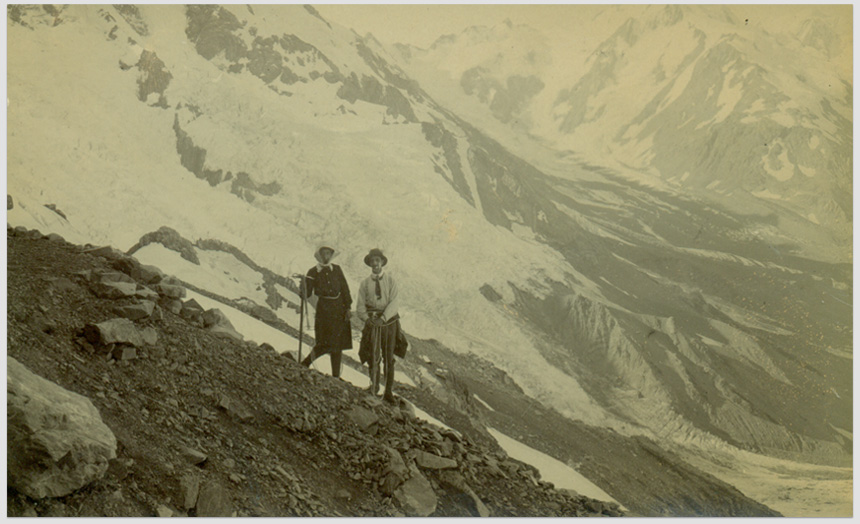 (18/22) Dorothy Theomin, snapshot postcard of Miss Theomin with a male climbing companion at the Haast Ridge Bivouac, (March 1913).
(18/22) Dorothy Theomin, snapshot postcard of Miss Theomin with a male climbing companion at the Haast Ridge Bivouac, (March 1913).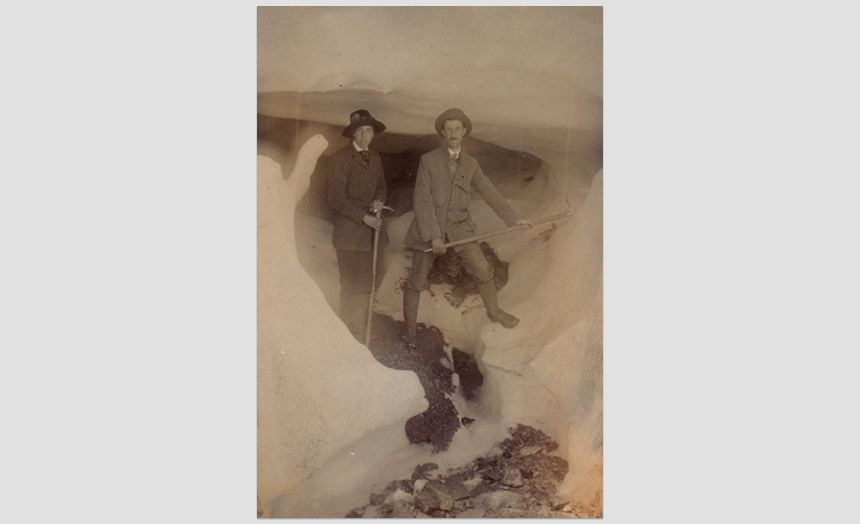 (19/22) Dorothy Theomin, aged 24, unknown companion, (1913).
(19/22) Dorothy Theomin, aged 24, unknown companion, (1913). (20/22) Snapshot inscribed on back in ink, ‘Dorothy Theomin (and) Lu Graham (Waiho) Olveston, Dunedin N.Z.’
(20/22) Snapshot inscribed on back in ink, ‘Dorothy Theomin (and) Lu Graham (Waiho) Olveston, Dunedin N.Z.’
Photo removed from front inside cover of Mrs Ethel Theomin’s scrapbook.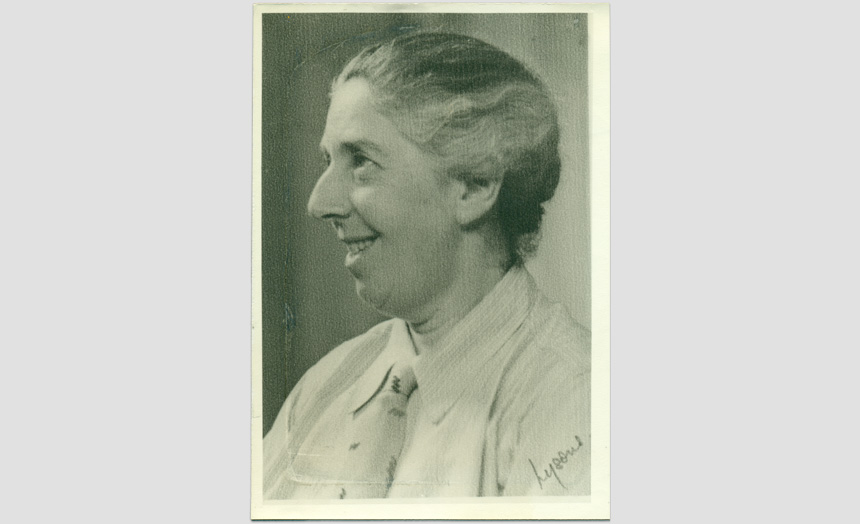 (21/22) Dorothy Theomin, portrait in middle age.
(21/22) Dorothy Theomin, portrait in middle age.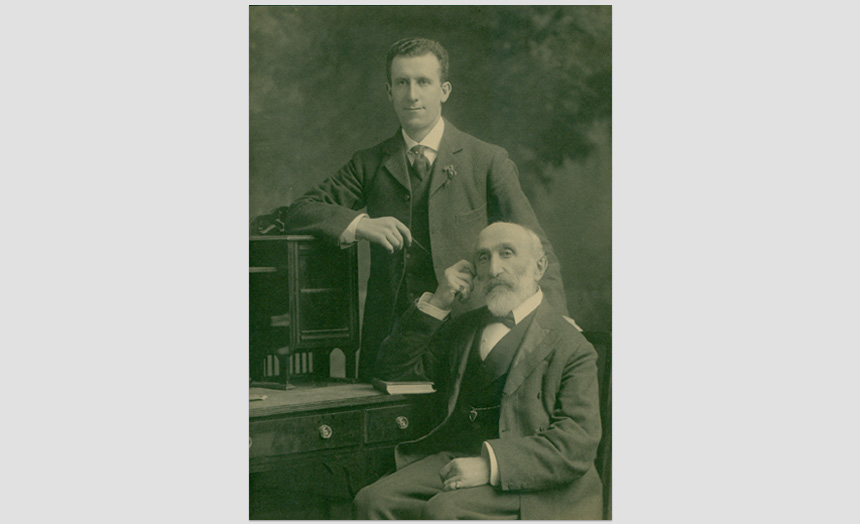 (22/22) Abraham Benjamin and his son, Lionel (Mr Theomin’s brother and nephew).
(22/22) Abraham Benjamin and his son, Lionel (Mr Theomin’s brother and nephew).
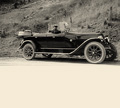 Find out more about Olveston House
Find out more about Olveston House
